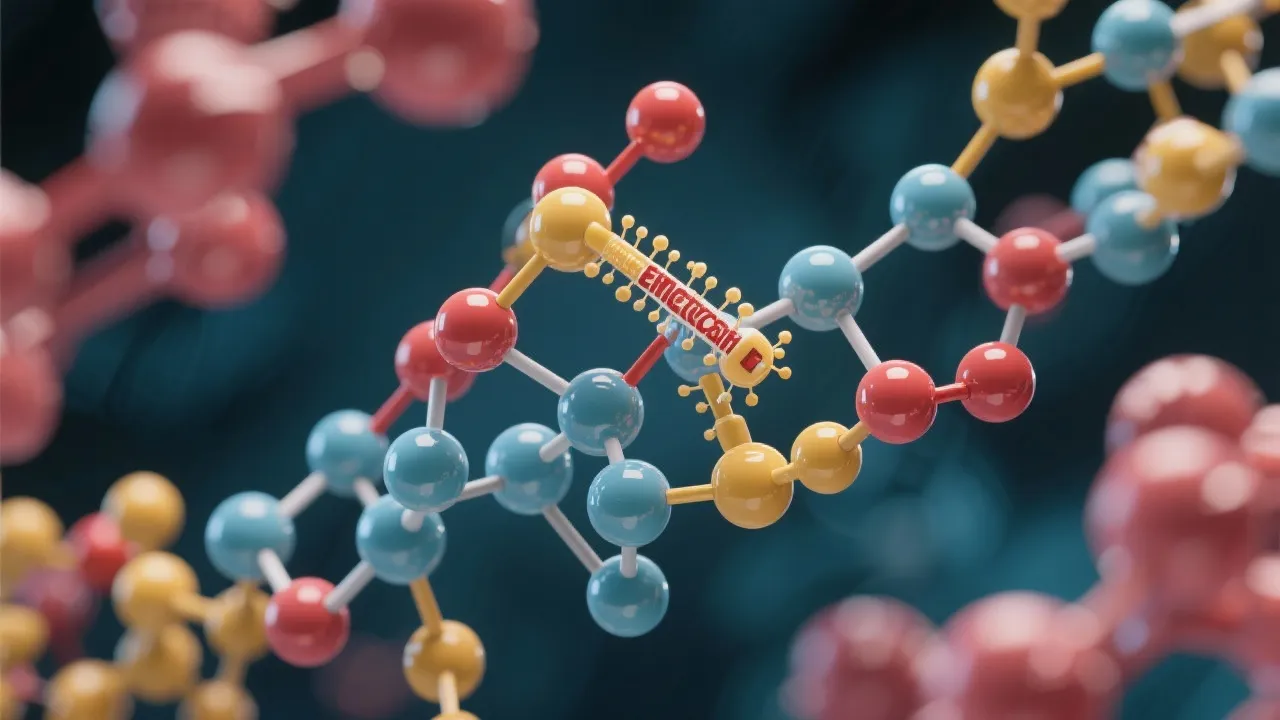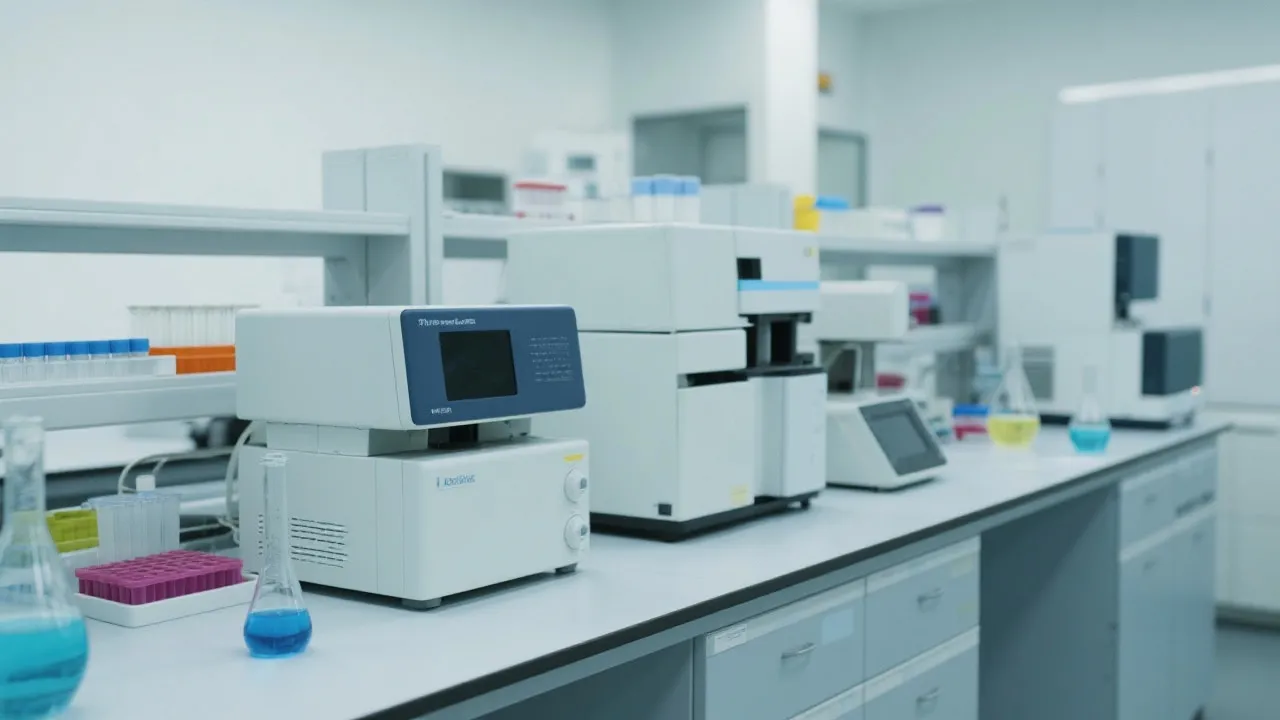Understanding Alox15 Inhibitor Function
This article delves into the intricacies of Alox15 inhibitors, which play a pivotal role in managing and regulating diverse biological processes. Alox15, an enzyme involved in inflammatory responses and lipid metabolism, presents as a therapeutic target for multiple health conditions. With cutting-edge research, the potential of effective Alox15 inhibition is being continuously explored to develop innovative healthcare solutions.

A Comprehensive Overview of Alox15 Inhibitors
Alox15 inhibitors are vital in modulating biological pathways that involve the enzyme arachidonate 15-lipoxygenase (Alox15). This enzyme is critically associated with the metabolism of polyunsaturated fatty acids and the inflammatory response. Targeting Alox15 has garnered attention due to its potential implications in conditions such as asthma, atherosclerosis, and neurodegenerative diseases. Increasing interest in these inhibitors is backed by a growing body of research, which suggests that modulation of Alox15 activity can significantly alter disease outcomes, offering hope for more effective treatment options.
The Role of Alox15 in the Body
Alox15 is predominantly involved in the oxidation of fatty acids, specifically impacting the production of 15-HETE (15-hydroxyeicosatetraenoic acid) and lipoxins. These biochemical activities influence inflammatory processes, cellular signaling, and have documented links to cancer proliferation and progression. For example, the metabolism of arachidonic acid by Alox15 leads to the production of eicosanoids that can significantly impact inflammation and immune responses. Understanding these mechanisms paves the way for therapeutic interventions through Alox15 inhibitors.
Moreover, Alox15 is implicated in several key physiological processes beyond inflammation. Its role in the regulation of vascular tone, modulation of airway hyperreactivity, and impact on neurotransmitter release places it at the forefront of cardiovascular, pulmonary, and neurobiological research. Specifically, the modulation of lipid mediators produced by Alox15 may also influence blood pressure and vascular remodeling, which are critical factors in cardiovascular disease and hypertension. Thus, the comprehensive study of Alox15 is paramount in recognizing both its beneficial and harmful implications within the body.
Potential Applications in Medicine
Research has shown that inhibiting Alox15 can ameliorate symptoms associated with chronic inflammatory diseases. For instance, by reducing the enzymatic activity of Alox15, the progression of atherosclerosis can potentially be curbed, thereby reducing cardiovascular risks. Atherosclerosis involves the accumulation of lipids, inflammatory cells, and fibrous elements in the arterial walls; thus, the activity of enzymes like Alox15 directly contributes to disease pathology. Modulating this enzyme can modify disease trajectories, opening new therapeutic avenues.
Furthermore, Alox15 inhibitors are being investigated for their role in mitigating oxidative stress in neurological disorders. Neurodegenerative conditions such as Alzheimer’s disease and multiple sclerosis are characterized by abnormal inflammatory responses and lipid peroxidation. By inhibiting Alox15, researchers hope to decrease the production of pro-inflammatory mediators, potentially slowing neurodegeneration. Additionally, the protective mechanisms facilitated by modulation of Alox15 may help to restore homeostasis in the central nervous system, which is often disrupted in these disorders.
In the realm of oncology, targeting Alox15 is gaining traction, as its products have been implicated in tumor progression and metastasis. Studies suggest that Alox15 influences tumor microenvironments, promoting cancer cell survival and proliferation through various pathways, including angiogenesis. Therefore, Alox15 inhibitors may represent a novel class of anti-cancer agents capable of addressing malignancies from different angles.
Current Research and Developments
Currently, the pharmaceutical industry is investing heavily in the development of selective Alox15 inhibitors. Various studies underscore their efficacy in different pathological models, acknowledging their therapeutic promise. Clinical trials and preclinical studies continue to highlight the prospective benefits and challenges associated with fine-tuning the actions of this enzyme within the human body. Promising candidates for Alox15 inhibition are emerging from multiple platforms, including structure-based drug design and high-throughput screening methods.
In recent years, novel compounds have demonstrated strong inhibitory activity against Alox15, leading to notable improvements in animal models of disease. For example, some small molecule inhibitors are being designed to exhibit high specificity for Alox15 without affecting other lipoxygenases. This aspect is particularly crucial in therapeutic applications to ensure selective modulation of the pathways involved in chronic inflammation, which might help minimize side effects and off-target actions typically associated with broader anti-inflammatory treatments.
Another area of interest lies in the combination therapies involving Alox15 inhibitors. Research indicates that co-administering these inhibitors with existing anti-inflammatory or immunomodulatory drugs could potentially yield synergistic effects, improving therapeutic outcomes. For instance, combining Alox15 inhibitors with corticosteroids or biologics in diseases like asthma and rheumatoid arthritis may enhance their clinical efficacy.
Moreover, advancements in delivery systems, such as nanoparticles and liposomes, are also being explored to enhance the bioavailability and targeted delivery of Alox15 inhibitors. These innovative strategies may further optimize the therapeutic potential of such compounds, addressing issues of solubility and distribution within complex biological systems.
Table: Comparison of Alox15 Inhibitors Development
| Inhibitor | Stage of Research | Potential Applications |
|---|---|---|
| Inhibitor A | Preclinical | Asthma, Cardiovascular Diseases |
| Inhibitor B | Clinical Trials | Neurodegenerative Disorders |
| Inhibitor C | Laboratory Research | Cancer Treatment |
| Inhibitor D | Preclinical | Autoimmune Diseases |
| Inhibitor E | Clinical Trials | Chronic Pain Conditions |
Challenges in the Development of Alox15 Inhibitors
Despite the potential benefits, developing effective Alox15 inhibitors poses significant scientific challenges. These include ensuring specificity to avoid off-target effects and understanding the broader implications of enzyme inhibition on bodily functions and overall health. The dual role of Alox15 in promoting both pro-inflammatory and anti-inflammatory pathways complicates the therapeutic targeting of this enzyme; thus, it's imperative that researchers clearly define the context in which these inhibitors are beneficial.
Another challenge lies in the limited understanding of the long-term effects of Alox15 inhibition. While short-term studies may show promising outcomes, the chronic effects of long-term inhibition on metabolism, homeostasis, and health must be thoroughly evaluated. For instance, inhibiting Alox15 might lead to an altered lipid profile which could have downstream effects on cardiovascular health. Additionally, the potential rebound effect after withdrawal from Alox15 inhibitors is an area that requires careful investigation.
Moreover, the complexity of biological systems means that targeting a single pathway through Alox15 inhibition might not yield the desired outcome. Diseases such as asthma, atherosclerosis, and cancer are multifactorial, necessitating a more integrated approach considering the interplay between various pathways and mediators. Thus, the development of Alox15 inhibitors should ideally be part of a broader therapeutic strategy that includes lifestyle considerations, dietary factors, and other pharmacological interventions.
Future Directions in Alox15 Research
The future of Alox15 inhibitors promises exciting developments, given the increasing emphasis on personalized medicine and targeted therapies. Continued research efforts will likely explore tailored approaches based on individual patient profiles, including genetic variations that impact Alox15 expression and function. Understanding these personalized aspects could facilitate more effective treatment regimens while minimizing adverse effects.
Furthermore, enhancing collaborative research initiatives between academia and industry can spark innovative development pathways for Alox15 inhibitors. Multidisciplinary approaches bringing together expertise from various fields, including pharmacology, biochemistry, and computational biology, can lead to the discovery of novel inhibitors and better comprehension of their mechanisms of action.
Enhanced characterization of Alox15 and its roles in different pathological contexts could also provide crucial insights into how inhibition can be optimized for therapeutic purposes. Future projects might focus on identifying biomarkers that predict response to Alox15 inhibitors, facilitating targeted interventions amidst variety among patient populations. As the field progresses, emerging technologies such as CRISPR and other gene-editing tools may also play a part in understanding the role of Alox15 better and its interaction with other metabolic pathways.
FAQs
What is the primary function of Alox15 in the body?
Alox15 primarily functions to metabolize polyunsaturated fatty acids, influencing inflammation and other metabolic processes. It catalyzes the oxygenation of fatty acids, leading to the production of bioactive lipid mediators that shape immune responses.
Why are Alox15 inhibitors important?
Alox15 inhibitors hold therapeutic potential for treating inflammatory and chronic diseases, offering a new avenue for medical advancements. Given their specificity, they may provide alternatives to traditional anti-inflammatory drugs that have broader side effects.
Are there any approved Alox15 inhibitors available for clinical use?
Currently, very few Alox15 inhibitors are in preclinical or clinical trial phases, with ongoing research aimed at ensuring their safety and efficacy before they can be widely adopted in clinical settings.
How do Alox15 inhibitors differ from other anti-inflammatory drugs?
Alox15 inhibitors specifically target the enzyme's metabolic pathways, while other anti-inflammatory drugs may act through broader mechanisms that could interfere with multiple biological systems, potentially leading to unwanted side effects.
In conclusion, Alox15 inhibitors represent a promising yet challenging area of medical research. Their ability to impact significant biological processes makes them valuable in the quest to advance therapeutic strategies for several serious health conditions. As research progresses, further understanding of their mechanisms will undoubtedly pave the way for new medical breakthroughs. The unfolding narrative surrounding Alox15 inhibitors is one of hope and potential, as new findings continue to emerge, revealing the complex interdependencies of lipid metabolism, inflammation, and disease modulation.





